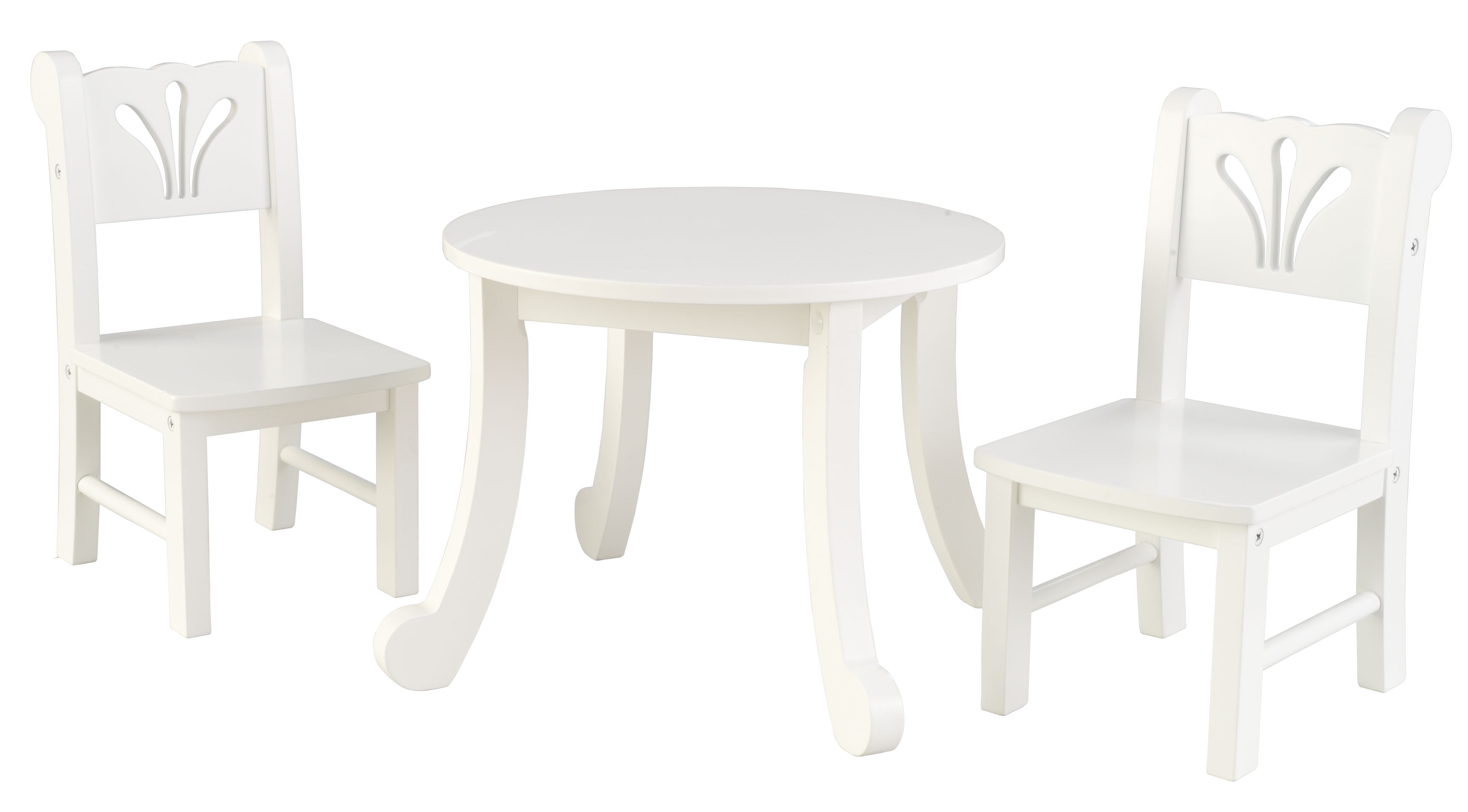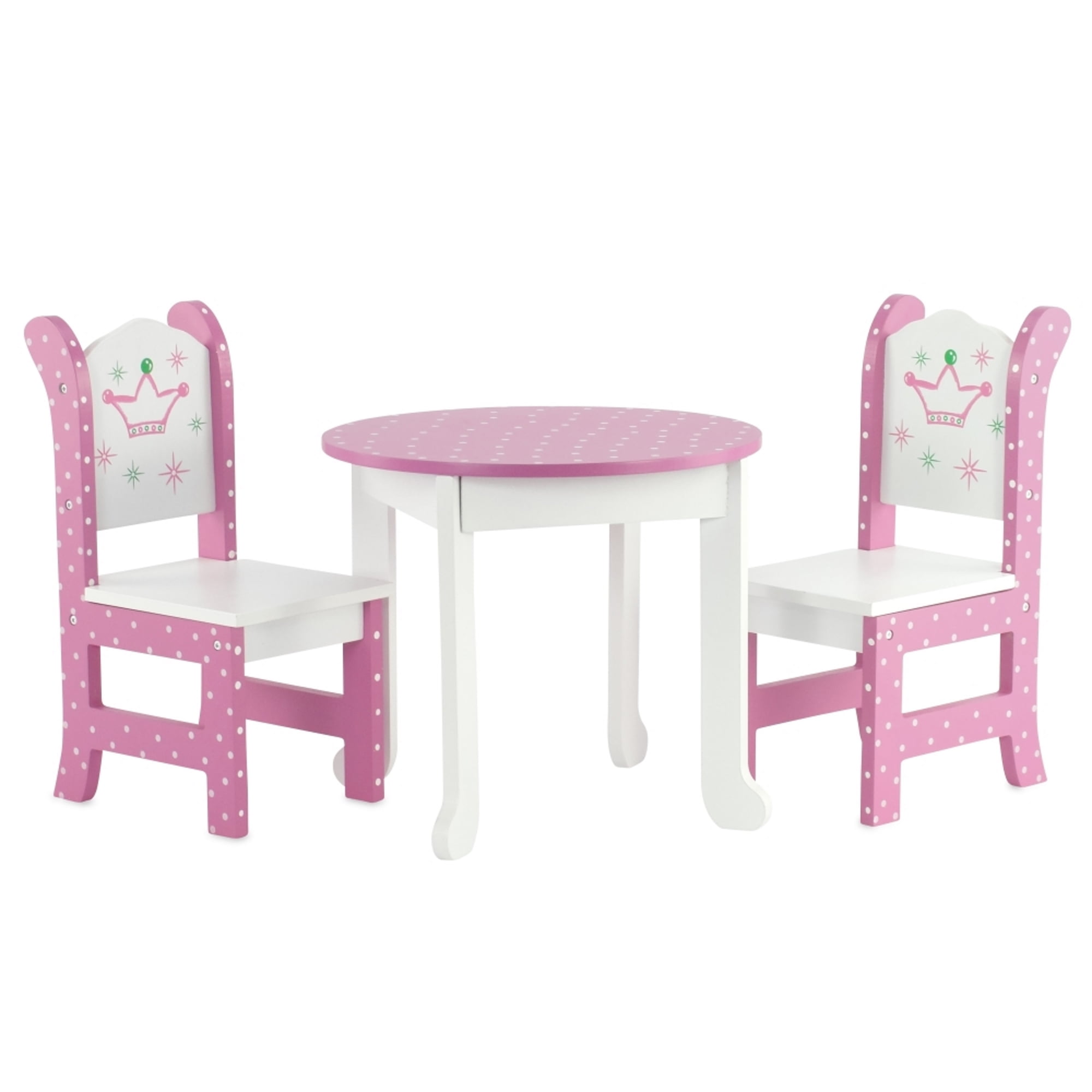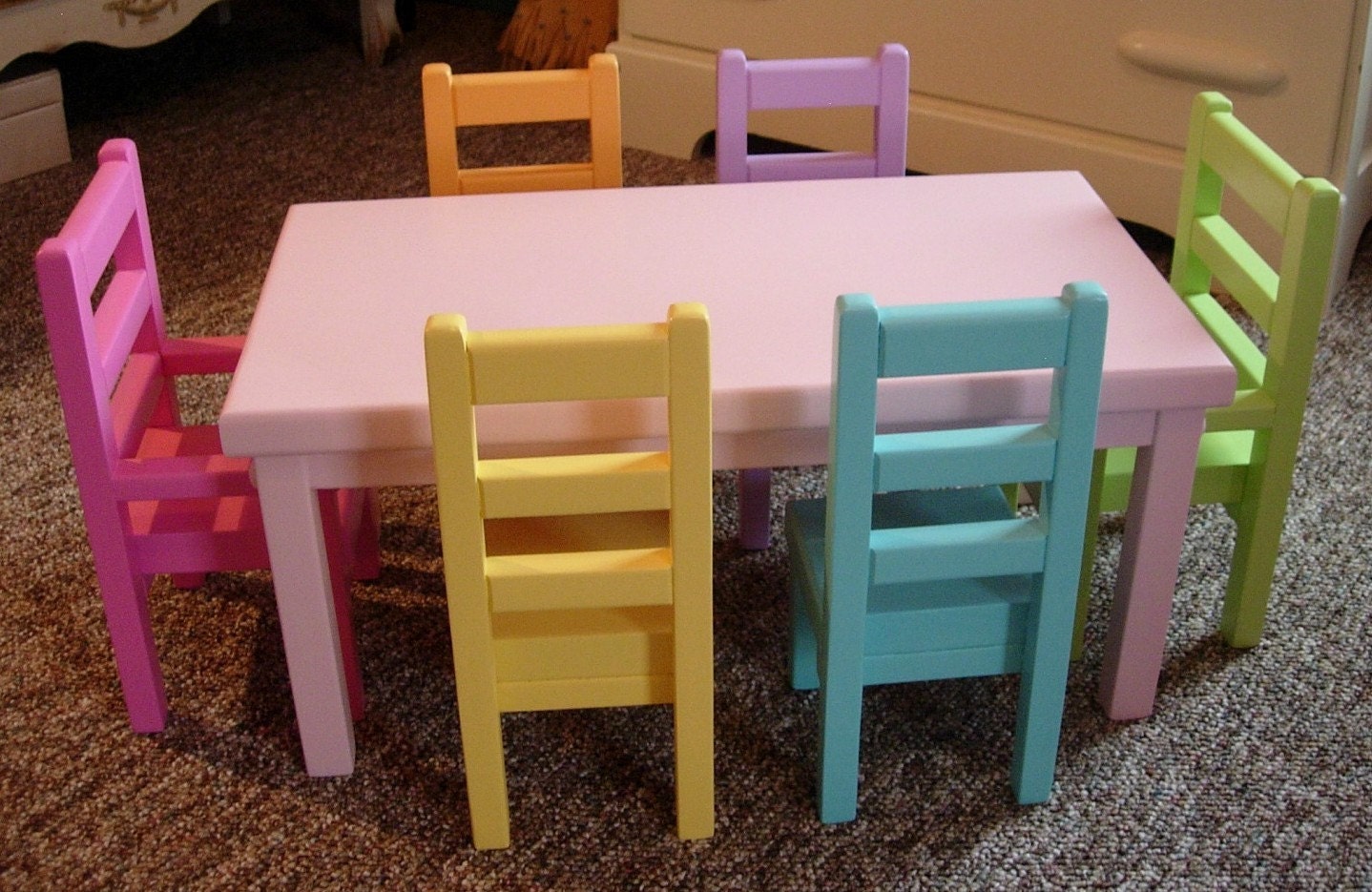History of Poppet Chairs and Tables: Poppet Chair And Table

The origins of poppet chairs and tables are deeply intertwined with the evolution of furniture design and the changing needs of society. These unique pieces, characterized by their doll-like figures and playful forms, have captivated collectors and historians alike, offering a glimpse into the craftsmanship and cultural sensibilities of past eras.
Origins and Early Examples
Poppet chairs and tables emerged as a distinct style during the 17th century, primarily in Europe. These whimsical pieces were often crafted for children, reflecting the burgeoning interest in childhood and the growing desire to create engaging and interactive objects for young ones. Early examples of poppet chairs, often called “dolly chairs,” featured simple wooden frames adorned with painted faces and limbs, resembling dolls. Poppet tables, on the other hand, were smaller versions of adult tables, often featuring intricate carvings and decorative elements.
The Rise of Poppet Furniture in the 18th Century
The 18th century witnessed a surge in the popularity of poppet furniture. This period was marked by a renewed appreciation for craftsmanship and artistry, with furniture makers striving to create pieces that were both functional and aesthetically pleasing. Poppet chairs and tables became increasingly elaborate, incorporating intricate carvings, painted details, and even movable parts. Notable examples from this era include:
- The “Poppet Chair” by Thomas Chippendale, a renowned English furniture maker, featured a beautifully carved wooden frame adorned with a painted face and a whimsical expression. This chair, now housed in the Victoria and Albert Museum in London, exemplifies the elegance and craftsmanship of 18th-century poppet furniture.
- The “Little Lady Table” by the French cabinetmaker Jean-Baptiste-Claude Sené, a masterpiece of rococo design, showcased intricate carvings, gilded surfaces, and delicate floral motifs. This table, now in the Musée des Arts Décoratifs in Paris, exemplifies the ornate and playful nature of poppet furniture in the 18th century.
Evolution of Design and Functionality
Throughout the 19th century, poppet chairs and tables continued to evolve, adapting to changing styles and incorporating new materials. The Victorian era, known for its ornate and romantic aesthetics, saw the emergence of poppet furniture featuring elaborate floral patterns, intricate carvings, and plush upholstery. These pieces often incorporated sentimental themes, reflecting the Victorian emphasis on family and domesticity.
- The “Doll’s House Chair” by the renowned Victorian furniture maker William Morris, showcased a simple yet elegant design, featuring a carved wooden frame adorned with a painted face and a whimsical expression. This chair, now in the Metropolitan Museum of Art in New York, exemplifies the simplicity and elegance of Victorian poppet furniture.
- The “Toy Table” by the English furniture maker George Hepplewhite, a prominent figure in the late 18th and early 19th centuries, featured a charming design with intricate carvings and painted details. This table, now in the Museum of London, exemplifies the intricate craftsmanship and playful nature of poppet furniture in the Victorian era.
Types and Styles of Poppet Chairs and Tables

Poppet chairs and tables, with their charming simplicity and timeless appeal, come in a variety of forms, each reflecting a specific purpose, design aesthetic, and cultural influence. Exploring the diverse styles and types of poppet furniture allows us to appreciate the ingenuity and artistry that went into their creation.
Categorizing Poppet Chairs and Tables
Poppet chairs and tables can be categorized based on their design, size, and intended use. This classification helps us understand the diverse range of these furniture pieces and their unique characteristics.
- Chair Types: Poppet chairs, known for their simple construction and comfortable seating, can be broadly categorized into:
- Single-Slat Chairs: These chairs feature a single, curved slat for the seat, often supported by two or three legs. They are typically smaller and more compact, ideal for children or as decorative pieces.
- Double-Slat Chairs: These chairs offer a more substantial seat with two curved slats, providing greater comfort and stability. They are often found in larger sizes and can be used for both adults and children.
- Backrest Chairs: Some poppet chairs feature a backrest, offering additional support and comfort. These chairs are often larger and more elaborate, incorporating decorative elements like carved details or painted designs.
- Table Types: Poppet tables, like their chair counterparts, exhibit diverse forms and sizes, each tailored to specific purposes:
- Small Tables: These compact tables, often circular or square, are perfect for bedside use, displaying small items, or serving as a child’s table.
- Large Tables: Larger poppet tables can accommodate several people, ideal for dining, working, or playing games. These tables often feature intricate carvings or painted designs, showcasing the craftsmanship of the makers.
- Folding Tables: Some poppet tables are designed to fold for easy storage or transport. These tables are particularly useful for picnics, outdoor gatherings, or as temporary work surfaces.
Styles and Design Aesthetics
The design aesthetics of poppet chairs and tables vary significantly, reflecting regional styles, cultural influences, and the time period of their creation. Here are some notable styles:
- Traditional Scandinavian Style: Poppet furniture from Scandinavia often features simple, functional designs with a focus on natural materials like wood. These pieces are characterized by clean lines, smooth curves, and a rustic charm.
- Rustic Farmhouse Style: Poppet chairs and tables in this style often exhibit a more robust construction, with thick wooden slats and sturdy legs. They often feature distressed finishes or painted designs, adding to their rustic appeal.
- Victorian Style: Poppet furniture from the Victorian era is often more ornate, with intricate carvings, decorative paintwork, and elaborate details. These pieces reflect the opulent tastes of the Victorian era and often feature floral motifs or geometric patterns.
Examples of Poppet Chair and Table Styles
To illustrate the diverse range of poppet chair and table styles, here is a table summarizing their key features and characteristics:
| Style | Distinctive Features | Characteristics | Scandinavian | Simple, functional design, clean lines, smooth curves, natural wood | Rustic charm, minimalist aesthetic, focus on functionality | Rustic Farmhouse | Robust construction, thick wooden slats, sturdy legs, distressed finishes, painted designs | Country charm, casual elegance, focus on durability | Victorian | Intricate carvings, decorative paintwork, elaborate details, floral motifs, geometric patterns | Opulent, ornate, reflects Victorian era taste |
|---|
Uses and Applications of Poppet Chairs and Tables
Poppet chairs and tables, with their unique construction and adaptability, have found diverse applications throughout history, serving various purposes across different cultures and societies. Their practicality and aesthetic appeal have ensured their enduring presence in both domestic and public settings.
Domestic Use
Poppet chairs and tables have been integral to domestic life for centuries, providing comfortable seating and functional surfaces for a range of activities. In traditional homes, these pieces often served as versatile furniture, adaptable to the needs of the family.
- Seating: Poppet chairs, with their simple yet sturdy design, offered comfortable seating for individuals and families, especially in smaller homes where space was limited. Their lightweight nature allowed for easy movement and rearrangement, making them ideal for both casual gatherings and formal occasions.
- Dining: Poppet tables, often constructed with a single, sturdy plank supported by poppets, provided a stable surface for meals and other domestic activities. Their size and shape could be customized to suit the needs of the household, ranging from small tables for intimate meals to larger ones for family gatherings.
- Storage: The poppets supporting the table top could be used to store tools, utensils, or other household items, maximizing space efficiency in smaller homes.
- Work Surfaces: In homes with limited workspace, poppet tables could be used as a makeshift desk or workbench, providing a sturdy and stable surface for tasks such as writing, sewing, or crafts.
Workshop and Industrial Applications
Beyond their domestic use, poppet chairs and tables have also found practical applications in workshops and industrial settings. Their robust construction and adaptability made them ideal for a variety of tasks.
- Workbench Support: Poppet chairs were commonly used as adjustable supports for workbenches, allowing craftsmen to easily adjust the height of their work surface to suit their needs. This adaptability was particularly valuable in woodworking and other trades where precise adjustments were crucial.
- Tool Storage: The poppets themselves could be used to store tools, providing a convenient and organized system for keeping essential items within reach.
- Temporary Seating: Poppet chairs were also used as temporary seating for workers in workshops and factories, offering a simple and readily available solution for breaks and short periods of rest.
Public Spaces and Symbolic Significance
Poppet chairs and tables have also found their way into public spaces, where they have served both functional and symbolic roles.
- Public Gatherings: In some cultures, poppet chairs and tables were used in public spaces for gatherings, festivals, and markets. Their simple design and ease of assembly made them suitable for temporary seating arrangements in public areas.
- Religious Contexts: In certain religious traditions, poppet chairs and tables held symbolic significance. For example, in some cultures, they were used in religious ceremonies or as furniture in places of worship.
- Cultural Identity: Poppet chairs and tables often became intertwined with the cultural identity of specific regions or communities. Their unique design and construction reflected the skills and traditions of local craftspeople.
Contemporary Relevance of Poppet Chairs and Tables

The resurgence of interest in poppet chairs and tables in contemporary design is a testament to their enduring appeal and adaptability. These unique pieces, with their distinct form and construction, offer a fresh perspective on furniture design, blending traditional craftsmanship with modern aesthetics.
The Growing Appreciation for Poppet Chairs and Tables, Poppet chair and table
The contemporary appreciation for poppet chairs and tables stems from several key factors. First, there’s a growing interest in handcrafted furniture, where each piece is unique and reflects the skill of the maker. Poppet chairs and tables, with their intricate joinery and hand-finished surfaces, perfectly embody this artisanal approach. Second, the focus on sustainability and responsible sourcing has led to a renewed interest in traditional furniture forms, like poppet chairs, which often utilize locally sourced materials and time-honored techniques. Third, the desire for unique and personalized furniture has driven a search for alternative designs that go beyond mass-produced options. Poppet chairs and tables, with their distinct character and versatility, perfectly fill this niche.
- Aesthetics: Poppet chairs and tables offer a distinctive aesthetic that blends traditional craftsmanship with modern sensibilities. Their simple, yet elegant lines, often accentuated by natural wood finishes, create a timeless appeal that complements a wide range of interior design styles.
- Functionality: Poppet chairs and tables are not merely decorative pieces. Their sturdy construction and versatile design make them suitable for a variety of uses, from dining to seating to display. Their adaptability to different spaces and functions makes them practical and desirable.
- Sustainability: The use of traditional joinery techniques, often without the need for glue or fasteners, minimizes waste and promotes sustainability. The use of locally sourced materials further reduces the environmental impact, making poppet chairs and tables a responsible choice for conscious consumers.
Modern Interpretations of Poppet Designs
Contemporary designers are reinterpreting the poppet chair and table in innovative ways, incorporating new materials and construction techniques while staying true to the core principles of these traditional forms. This approach results in unique and functional pieces that seamlessly blend heritage with modernity.
- Material Exploration: Contemporary poppet chairs and tables are pushing the boundaries of traditional materials. While wood remains a popular choice, designers are also experimenting with materials like metal, acrylic, and recycled plastics, creating visually striking and sustainable pieces. The use of these materials allows for new forms and finishes, expanding the aesthetic possibilities of poppet designs.
- Innovative Construction: Contemporary poppet chairs and tables often utilize innovative construction techniques that combine traditional joinery with modern manufacturing methods. For example, designers are incorporating CNC milling and 3D printing to create complex shapes and intricate details, while still maintaining the integrity of the poppet construction.
- Functional Innovation: Contemporary poppet chairs and tables are often designed with specific functions in mind. For example, a poppet chair might be designed with a built-in storage compartment, or a poppet table might be designed to fold flat for easy storage. This focus on functionality ensures that these pieces are not just aesthetically pleasing but also practical and adaptable to modern lifestyles.
The Potential for Poppet Chairs and Tables to Inspire New Furniture Designs
The enduring appeal of poppet chairs and tables lies in their ability to inspire new furniture designs. Their unique form and construction, combined with their adaptability to different materials and techniques, offer a wealth of possibilities for contemporary furniture makers.
- Reimagining Traditional Forms: The simple yet elegant lines of poppet chairs and tables can be adapted to create a wide range of furniture forms, from seating and tables to storage units and lighting fixtures. This reimagining of traditional forms allows designers to create unique and functional pieces that are both familiar and fresh.
- Exploring New Materials and Techniques: The use of poppet construction techniques can inspire the exploration of new materials and manufacturing processes. For example, the use of 3D printing could be used to create intricate poppet joints, allowing for the creation of furniture with complex geometries and intricate details.
- Promoting Sustainability and Craftsmanship: The focus on traditional craftsmanship and sustainable materials in poppet chairs and tables can inspire a new wave of furniture design that prioritizes ethical and responsible production practices. This shift towards sustainability and craftsmanship can have a positive impact on the environment and the furniture industry as a whole.
Poppet chair and table – Poppet chairs and tables are a delightful addition to any child’s room, offering a space for play and creativity. For outdoor adventures, however, a more robust option like the ozark trail folding chair with table might be a better choice.
Its sturdy construction and portability make it ideal for picnics, camping, or simply enjoying the sunshine in the backyard, providing a comfortable spot to relax and enjoy the outdoors.
Poppet chairs and tables are charming additions to any nursery or playroom, offering a delightful space for little ones to engage in imaginative play. For a more grown-up workspace, consider the luxurious comfort of an ekornes stressless chair computer table.
This ergonomic setup combines ultimate relaxation with practical functionality, perfect for long hours of work or creative pursuits. Whether you’re creating a playful haven for a child or a sophisticated haven for yourself, the right chair and table can truly enhance your space.
